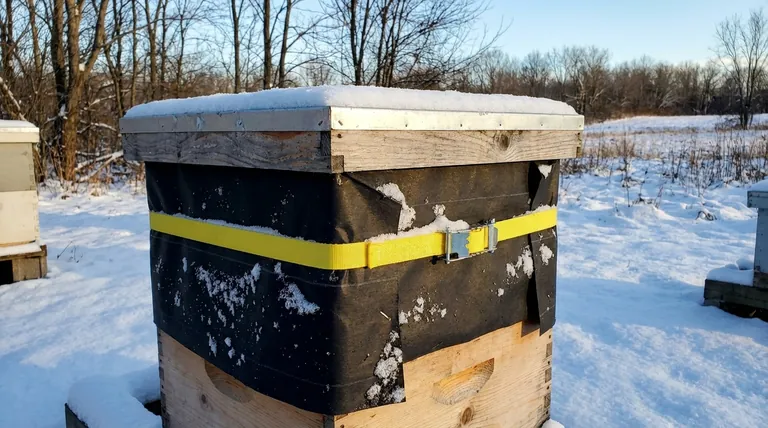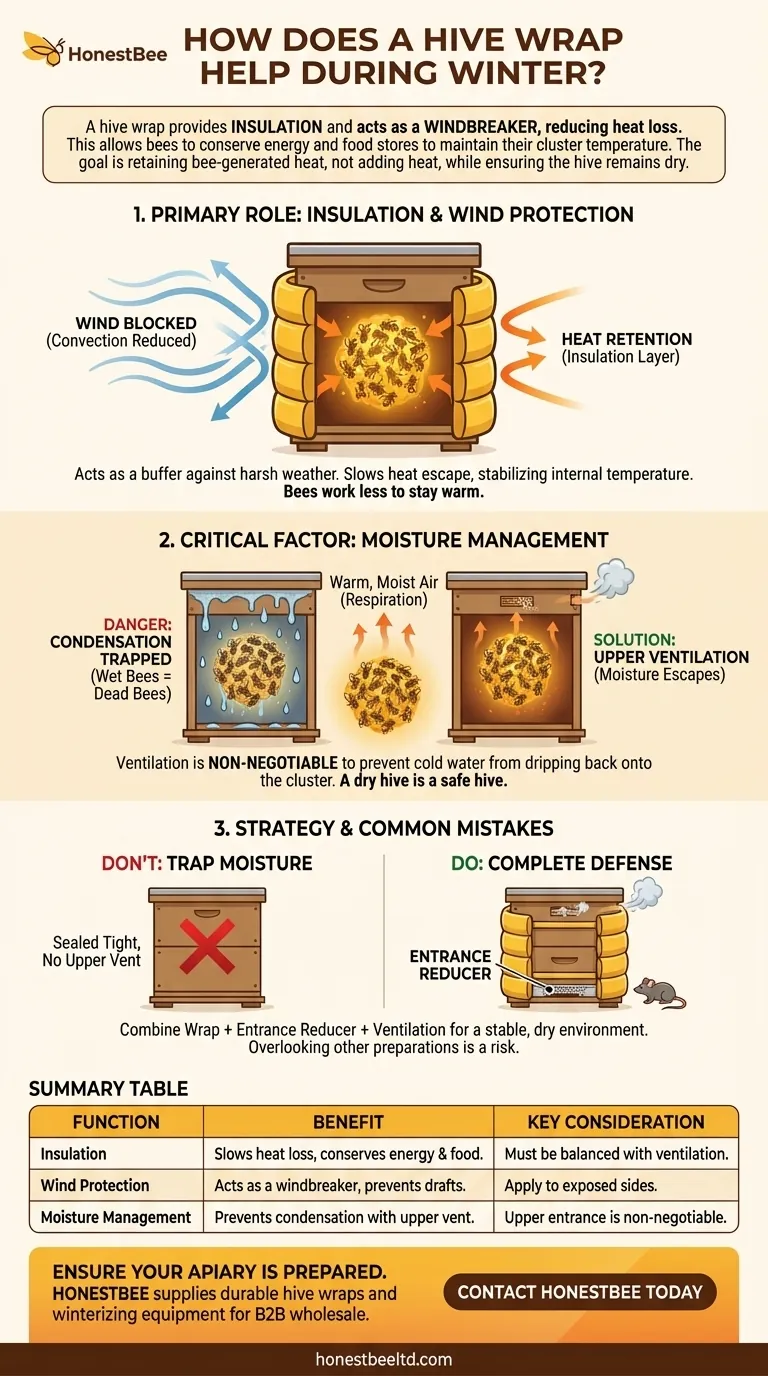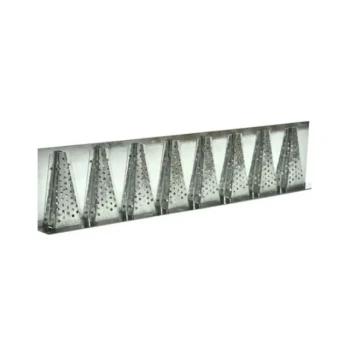In short, a hive wrap helps during winter by providing insulation and acting as a windbreaker. This protective layer reduces the amount of heat the colony loses to the surrounding cold air, allowing the bees to expend less energy and consume fewer food stores to maintain the critical temperature of their cluster.
The primary goal of a hive wrap is not to heat the hive, but to help the bees more efficiently retain the heat they generate themselves, all while ensuring the hive remains dry. Success hinges on balancing insulation with proper ventilation to manage moisture.

The Primary Role: Insulation and Wind Protection
A hive wrap serves as a protective jacket for the beehive. Its main benefits come from creating a buffer between the internal hive environment and the harsh external weather.
Blocking the Wind
Wind is a significant factor in heat loss for a hive. It strips warmth away from the hive walls through a process called convection.
A hive wrap acts as a crucial windbreaker, stopping cold drafts from penetrating cracks and preventing the wind from rapidly cooling the hive's exterior surfaces.
Providing an Insulating Layer
Bees do not heat the entire hive; they heat their cluster. The wrap provides a layer of insulation that slows the rate at which this precious heat escapes through the hive body.
This means the cluster can maintain its temperature with less effort, which is critical for conserving their winter food supply.
Reducing Internal Temperature Fluctuations
By buffering the hive from extreme cold and wind, a wrap helps stabilize the internal temperature. This reduces stress on the colony and prevents the bees from having to work excessively hard to generate heat during sudden cold snaps.
The Critical Factor Beyond Insulation: Moisture
While adding insulation is beneficial, it introduces a new challenge: condensation. Managing this moisture is arguably more important than managing the cold itself.
The Dangers of Condensation
The bee cluster generates warmth and moisture through respiration. When this warm, moist air rises and hits the cold inner cover of the hive, it can condense into water droplets.
This cold water can drip back down onto the bees, chilling and even killing them. A wet colony is a dead colony.
Why Ventilation is Non-Negotiable
To prevent deadly condensation, you must provide an escape route for the moist air. This is why a small upper entrance or ventilation port is essential.
This vent allows the warm, humid air to exit the hive before it can condense and cause problems, keeping the bees dry and safe. A wrap should never seal the hive completely.
Understanding the Trade-offs and Common Mistakes
Using a hive wrap is an effective strategy, but it's not without potential downsides if implemented incorrectly. Understanding these trade-offs is key to success.
Trapping Moisture is the Biggest Risk
The most common mistake is failing to provide adequate ventilation. Wrapping a hive tightly without an upper vent traps moisture, creating a damp, cold environment that is far more dangerous than the cold alone.
Overlooking Other Preparations
A wrap is not a substitute for other essential winter preparations. You must also use an entrance reducer at the bottom of the hive.
This smaller opening helps keep cold drafts out and prevents mice and other pests from seeking shelter inside the hive.
How to Apply This to Your Winter Preparation
Your winterizing strategy should create a hive that is insulated, protected from wind, and, most importantly, dry.
- If your primary focus is preventing heat loss: Use a hive wrap to block wind and add a layer of insulation, especially on the sides of the hive most exposed to prevailing winds.
- If your primary focus is keeping the colony dry: Ensure you have a small upper entrance for ventilation that allows moist air to escape, preventing condensation from dripping on the cluster.
- If your primary focus is overall colony survival: Combine a hive wrap with an entrance reducer and proper ventilation to create a comprehensive defense against cold, wind, and moisture.
Ultimately, a successful winter strategy is about creating a stable and dry environment where your bees can conserve their energy and resources until spring.
Summary Table:
| Function | Benefit | Key Consideration |
|---|---|---|
| Insulation | Slows heat loss, helping bees conserve energy and food. | Must be balanced with ventilation. |
| Wind Protection | Acts as a windbreaker to prevent heat loss from drafts. | Apply to sides exposed to prevailing winds. |
| Moisture Management | Prevents condensation when paired with an upper vent. | An upper entrance is non-negotiable to avoid a wet, dangerous hive. |
Ensure your apiary is prepared for a successful winter. HONESTBEE supplies durable, high-quality hive wraps and essential winterizing equipment to commercial apiaries and beekeeping equipment distributors. Our wholesale-focused operations ensure you get the reliable supplies you need to protect your colonies. Contact HONESTBEE today to discuss your winter preparation needs and secure your inventory.
Visual Guide

Related Products
- Professional Galvanized Hive Strap with Secure Locking Buckle for Beekeeping
- Beekeeping Gloves Goatskin Leather with Long Cotton Sleeve for Beekeepers
- Endless Loop Ratchet Hive Strap
- Black Plastic Beetle Barn Hive Beetle Trap for Beehives
- Professional Engraved Round Hive Number Tags for Beekeeping
People Also Ask
- What is the best length for straps used around beehives? Why 12 Feet is the Industry Standard
- What maintenance is required for hive straps? A Guide to Cam Buckle vs. Ratchet Strap Care
- How can beekeepers secure the top cover of a hive? Protect Your Colony from Wind and Weather
- What are the types of Emlocks available? Choose the Right Strap for Hive Security
- What are hive straps and why are they used? Secure Your Hives Against Wind, Predators, and Transport



















